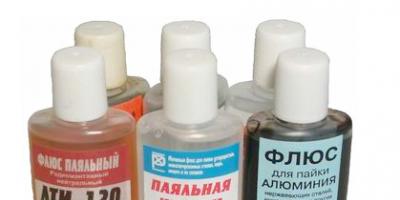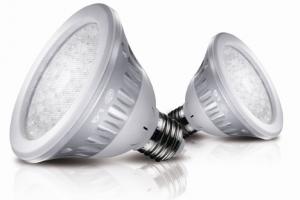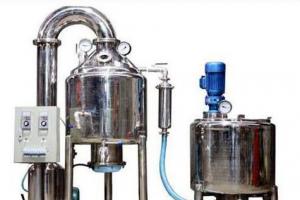With diarrhea, the number of bowel movements and the amount of feces increases, which leads to dehydration. One of the rarest forms is white diarrhea. Factors may include certain medications, helminthic infestations, dysbacteriosis, poisoning, or the presence of pathology in the body. Liquid white stool should not be ignored; the person needs to be examined and remember what he consumed the day before. Sometimes this manifestation occurs due to a stressful situation.
Causes
The formation of white diarrhea in an adult is caused by numerous reasons. Each of them needs an individual approach, since the elimination of the problem will be determined precisely by the factor in the appearance of diarrhea.
Food
The color of stool often depends on the food eaten. The white tint of stool is caused by bile, enzymes that take part in the digestive process.
It is worth noting that this color of stool is observed for 1-2 days, then it becomes as before. After you stop eating fatty, dairy foods, the color of the excrement will return to normal.
The following foods cause changes in stool color:
- vegetable oils, including extra virgin olive oil;
- meat products (kebabs, lard, fatty jellied meat, meat, broth);
- dairy products with a high percentage of fat (cottage cheese, milk, sour cream, butter, cream).
White or beige stool occurs when undigested pieces of fat are present in the feces. The pancreas was unable to do its job because it did not produce the required number of enzymes to digest food.

However, if a problem does arise, to eliminate white diarrhea in an adult, you need to exclude the following foods from your diet:
- spicy foods, onions, garlic;
- fatty meat, dairy products;
- alcohol, ;
- sour drinks;
- various seasonings;
- ginger root.
By giving up these products, the problem will resolve on its own.
Medications
Why does it appear, and what other reasons can cause white stool? The medications used may be a factor:
- Tetracycline antibiotic, antifungal agents (Augmentin).
- NSAIDs that relieve inflammation (Ibuprofen, Paracetamol), if the dosage is exceeded.
- Acetylsalicylic acid.
- Steroid medications (Methotrexate) that affect the functioning of the endocrine system.
- Medicines for gout (Allopurinol).
- Medicines to combat epilepsy, which contain predominantly valproic acid.
- A certain group of oral contraceptives.
- Drugs against tuberculosis containing fats.

When light-colored stool is caused by one of these medications, then by stopping using them, the stool will recover on its own after 3-4 days. But if for some reason you cannot stop drinking the drug, you should consult a specialist. He will select a similar drug that will not cause an adverse reaction. In addition, the doctor can supplement the therapy, prescribe medications that have a positive effect on the treatment of the liver, gallbladder and pancreas, in accordance with the organ that caused the stool disorder.
Basically, such a side effect is not observed in a person with a healthy gastrointestinal tract, so it does not hurt to be examined.
When will you need a doctor's help?
A single episode of light-colored diarrhea does not pose a health hazard. But when such a manifestation occurs frequently (for example, three times in 2 months), you need to be wary. Due to this symptom alone, it will not be possible to establish a diagnosis. You need to pay attention to changes in your condition, that is, when diarrhea is accompanied by:
- increased body temperature;
- yellowish color of the eye whites;
- abdominal pain;
- lack of appetite;
- increased gas formation in the intestines;
- dark colored urine;
- tiresome spasms of the esophagus after eating;
- increase in belly size;
- nausea, vomiting;
- itching in the anus;
- weight loss or weight gain;
- yellowish skin tone;
- tingling, feeling of pain in the right side of the abdomen.

If a person has at least a few of these symptoms, this is a reason to go to a therapist.
Diseases
Liquid, white stool, associated with a foul odor and expressed for a long time, may indicate the development of a disease of the internal organs.
Hepatitis
The disease is characterized by yellowing of the skin, whites of the eyes, dull painful sensations in the abdominal cavity, and a violation of the consistency of stool. Hepatitis, provoked by a viral irritant, often goes away with febrile symptoms and an increase in temperature.
Other forms of the disease are not so pronounced, they are mostly chronic, but at the time of exacerbation the symptoms are almost the same.
Cholecystitis
This pathology is characterized not only by frequent bowel movements, but also by severe pain in the right hypochondrium. When the disease is in an acute stage, hospitalization will be required.
Symptoms of cholecystitis: intense pain, high fever. The pulse rate is accelerated. In the chronic form, there are no pain sensations as such, however, the shade of the whites of the eyes and skin changes. A person experiences bloating, stool becomes white, and urine becomes dark and foamy.
Pancreatitis
The disease is accompanied by the following symptoms:
- white diarrhea;
- nausea, vomiting with a bitter taste;
- temperature increase to 37.5 °C;
- cloudy urine;
- feeling of pain in the upper abdomen.

Sometimes yellowness of the skin may be observed.
Gallstone pathology
At the first stage of development, gallstone disease passes without noticeable symptoms. After several days, the signs become most visible: loose white stools appear, pain in the area of the shoulder blade, chest, and shoulder.
Oncology
Light-colored stools and their disorder can be a symptom of a cancerous tumor of the gallbladder or gland, stomach, or liver. Other signs depend on the stage of the disease and the location of the tumor.
Therefore, changes in stool and color of stool can indicate a dangerous pathology and lead to serious consequences.
Other factors
Other reasons can lead to white stool:
- Dysbacteriosis - usually occurs in infants. Here, in addition to liquid diarrhea, particles of undigested food and mucus are noted. The child eats poorly, loses weight, and develops insomnia.
- Rotavirus infection - the disease initially manifests itself with the appearance of diarrhea, first yellow, then gray, sometimes white. Vomiting and high body temperature occur. The patient develops rhinitis, sore throat, and migraine.
- Whipple's disease is an intestinal disorder of an infectious nature. Develops rarely, mainly before 3 years of age. Symptoms: muscle pain, thirst, rapid heartbeat, inflamed gums.
- Food poisoning – in adults and children, poisoning is caused by stale, expired food. Here you will need medical attention, since an infectious disease (salmonellosis, botulism) may occur.
- Stress – “bear sickness” – often occurs among students during a session.

Such factors provoke light diarrhea in adults and spasm of the biliary tract. Vomiting occurs if the food has not been thoroughly processed with bile.
Treatment
When white diarrhea is caused by bacterial diseases, antibiotics become the basis of therapy. When:
- For pancreatitis, the doctor prescribes painkillers and enzymes.
- Symptoms of cholecystitis are eliminated through antispasmodics and choleretic medications.
- Treatment of white diarrhea resulting from dysbacteriosis occurs with the help of enzymes (Bifiform, Hilak forte, Baktistatin, Linex), which normalize the functioning of the intestines.
Medicines must be taken strictly as prescribed by a specialist. The main rule for treating bowel movements is to replenish the water balance. To do this you need to drink more water. You can use special solutions (Ringer, Regidron) sold in pharmacies. You should not drink soda, compotes, or fruit drinks at this moment; they will adversely affect the consistency of stool.
For seriously ill patients, water-electrolyte solutions are introduced into the body using a dropper. In addition to replenishing fluid, you will need a certain diet (rice porridge with water, decoctions, jelly, crackers). Home remedies (tincture of wormwood, blueberries, bird cherry, decoction of oak bark, etc.) will help to positively eliminate white diarrhea.
When light diarrhea can be quickly eliminated, this indicates that the main cause has been removed. To avoid recurrence of symptoms, you need to perform a comprehensive examination to determine the diagnosis. Then complete the therapeutic course prescribed by the doctor.
The information on our website is provided by qualified doctors and is for informational purposes only. Don't self-medicate! Be sure to consult a specialist!
Gastroenterologist, professor, doctor of medical sciences. Prescribes diagnostics and carries out treatment. Expert of the group for the study of inflammatory diseases. Author of more than 300 scientific papers.
27.03.2017
If a person has light diarrhea, then this directly indicates quite serious liver diseases. This is explained by the entry of bile pigment into the intestinal lumen, which is why the feces are painted in a light shade. In this case, loose stools may alternate with normal ones, but the color of the stool will still differ from normal. What should be done in such cases? Which doctor should I contact for help and what tests should I take? How dangerous is it?
The main causes of light-colored stool
The normal color of stool (brown or dark brown) is given by bilirubin - this is a derivative pigment of bile, which in a healthy person is broken down in the duodenum and simplifies further digestion of food in the intestine. However, if this process is disrupted, then normal bile enters the intestines, which gives the stool a light shade. All this is accompanied by severe diarrhea, since the food is simply not digested normally and cannot be absorbed normally. And because of this, the microflora in the intestines is disrupted, the number of harmful bacteria that actively synthesize toxins increases. It is they that provoke diarrhea - the body thus gets rid of substances that are toxic to itself.
What diseases can cause a person to have light-colored stools? Most often, doctors diagnose:
- cholecystitis;
- hepatitis;
- Crohn's disease;
- the presence of tumors in the liver, gallbladder ducts or digestive tract.
It can be noted that all of the above diseases are directly or indirectly related to liver functions. Also, light diarrhea in adults can be caused by destructive processes in this organ. We are talking about cirrhosis or banal alcohol poisoning.
Doctors also indicate that a similar symptom can develop in a person while taking certain medications. This:
- broad-spectrum antibiotics;
- anti-inflammatory drugs (except for those used exclusively externally);
- some medications prescribed for gout, which are designed to normalize metabolic processes in the body or speed up metabolism.
And often light-colored diarrhea is a sign of pancreatic disorder. It may also indicate excessive stress on the stomach or diabetes. True, the color spectrum of feces will then be somewhat darker than when bile enters the intestines, and sometimes it can take on a greenish or gray color.
What to do?

So, if a person has light or bright yellow diarrhea for the first time, then you should not immediately rush headlong to the hospital. It is quite possible that such a symptom arose from eating foods containing large quantities of synthetic food dyes. As a rule, in this case, the color of stool returns to normal after 1–2 days. A similar thing happens, for example, when eating a large amount of corn. The only caveat is that the person should not have any other accompanying symptoms.
If the shades of feces change literally every other day, while following the usual diet, then this indicates an excessive load on the digestive tract that occurred about a few days ago. Everything here is extremely simple - for 1-2 days you need to use a “fasting” diet based on boiled and baked fruits, vegetables, bran bread and low-fat fermented milk products.
But if the light color of the stool is accompanied by pain in the stomach or liver, then you should not delay going to the doctor. Moreover, you should immediately contact a therapist. He will most likely immediately refer you to a surgeon to rule out cases of appendicitis, ulcer or ovarian rupture. Subsequently, the patient is admitted for treatment to a gastroenterologist.
The most difficult stage of treatment is establishing the exact primary cause of the gastrointestinal tract disorder. In this regard, the doctor may order the following tests:
- general and extended blood tests;
- urine and stool analysis;
- examination of the stomach cavity (gastroscopy);
- determination of the concentration of enzymes in gastric juice (partial sampling is done);
- checking the concentration of hormones synthesized by the pancreas and thyroid glands (if there are signs of a disorder in their functioning).
What treatment do doctors prescribe?
 If the stool is pale yellow, a strict diet is first introduced for 3-5 days (at the discretion of the doctor). The following foods must be excluded from the diet:
If the stool is pale yellow, a strict diet is first introduced for 3-5 days (at the discretion of the doctor). The following foods must be excluded from the diet:
- fatty meat (beef, pork);
- raw vegetables and fruits (boiled and baked - allowed);
- hot, spicy;
- fatty fermented milk products;
- onions, garlic, ginger (even in the form of a tea decoction);
- alcohol, carbonated drinks.
If the doctor prescribes a “fasting day,” this means that you can only drink water and eat only well-cooked rice (in small portions every 2-3 hours).
Also, when prescribing a diet, all food is consumed exclusively in puree form. Even porridge should be ground using a blender or food processor. You should also temporarily stop taking medications that stimulate fluid absorption in the intestines. You should definitely tell your doctor about all medications you take.
Light diarrhea with fever
If light diarrhea is accompanied by an increase in body temperature, this indicates an infectious lesion of the liver or a radically changed intestinal microflora. In this case, feces for analysis and blood from a vein are given as soon as possible (for an extended examination). In the future, antiviral drugs, antibiotics or anti-inflammatory drugs are prescribed. Temperature with any diarrhea is a rather serious and dangerous symptom that requires prompt identification of the cause of the digestive tract disorder.
In summary, light diarrhea in an adult most often indicates problems in the functioning of the liver or pancreas, when food is not digested normally, and bile enters the intestines. Often this symptom is caused by excessive stress on the gastrointestinal tract or by eating foods with dye. If the patient does not feel worse, and after 1-2 days the color of the stool becomes normal, then there is no reason to panic. If he has a fever or diarrhea is accompanied by pain in the abdomen or stomach area, he should immediately consult a doctor. Until this point, a gentle diet is used.
White diarrhea is a consequence of poor processing of stool by bile in adults. This happens when the bile ducts are blocked by stones or a tumor.
This condition must be treated urgently to prevent the development of serious pathologies.
The human body is very sensitive to poor quality food, pathological processes occurring inside the body, as well as external unfavorable factors.
 In an adult, white diarrhea appears:
In an adult, white diarrhea appears:
- due to overeating;
- due to consumption of low-quality or spoiled (expired) products;
- after abuse of strong drinks;
- as a result of stressful situations.
The listed factors cause spasms in the bile ducts. As a result, the stool loses its normal color (from light to dark shades of brown) and becomes white.
If diarrhea in an adult does not stop within several days, you should consult a gastroenterologist.
 White diarrhea in rare cases is a consequence of hepatitis. This is a liver disease of viral etiology, which is accompanied by inflammatory processes in the organ.
White diarrhea in rare cases is a consequence of hepatitis. This is a liver disease of viral etiology, which is accompanied by inflammatory processes in the organ.
Light diarrhea also occurs with cholecystitis, pancreatitis, cholelithiasis, and oncological processes. Oral contraceptives that a woman takes for a long time can discolor stool. Acetylsalicylic acid and the antibiotic of the Tetracycline series also to a small extent contribute to the appearance of light diarrhea in adults.
Treatment of diarrhea
If a person is not bothered by anything other than white diarrhea, then treatment can be carried out at home.
To eliminate diarrhea and discomfort in the intestinal area, traditional folk methods are used:
- When you have diarrhea, it is important to drink plenty of fluids. Optimally - non-carbonated mineral water or warm tea without sugar (a slice of lemon in tea will speed up recovery).

- Abdominal massage - circular movements in a clockwise direction facilitate and stimulate intestinal function.
- Enema - instead of plain water, it is better to use chamomile infusion. The procedure is carried out several times until the intestines are completely cleansed.
- Gastric lavage is performed only if other methods do not help. This procedure is performed by medical professionals.
To treat diarrhea caused by infections, antibiotics, enzymes, sorbents, drugs that slow down intestinal motility and antiseptics are used.
If the patient is bothered by severe abdominal pain, nausea, dizziness, chills, then it is necessary to urgently consult a doctor. Diarrhea negatively affects the overall health and functioning of the body's internal systems.
If acute pain appears in the area of the right hypochondrium and stomach, it is recommended to call an ambulance.
Further treatment and determination of the causes can only be carried out under the constant supervision of medical personnel. Otherwise, the person himself will cause irreparable harm to his health.
Prevention of diarrhea
Prevention is the main measure to prevent many diseases or reduce their negative impact on the body.
 To prevent a disorder that entails dehydration of the body and leaching of beneficial microelements from it, the following rules must be followed:
To prevent a disorder that entails dehydration of the body and leaching of beneficial microelements from it, the following rules must be followed:
- regularly eat fermented milk products (kefir, yoghurt) - they help normalize the intestinal microflora and prevent intestinal disorders;
- The basis of the diet should be fruits and vegetables - the fiber contained in them helps cleanse the intestines and prevents feces, mucus and pathogenic microorganisms from clogging the body and disrupting its normal functioning;
- lean meat - animal protein is the basis for the proper functioning of the whole body, boiled meat of lean varieties is especially useful, it is completely digestible and saturates the body with amino acids and other useful microelements.
Proper nutrition and regular examinations will help prevent or neutralize the problem in time.
If you do not take proper care of your health, then over time serious pathologies and functional disorders in the functioning of all internal organs will develop.
Diarrhea or diarrhea is not an independent disease, but a symptom of a disorder in the gastrointestinal tract. Is diarrhea always bad? Not always. Thus, our “smart” body tries to get rid of the “garbage” that we have thrown into it. But it can also be a symptom of a serious illness that requires the help of specialists. What does white diarrhea mean? White diarrhea is no exception. The reasons for this phenomenon are quite extensive. We will look at the main causes, as well as: what are the symptoms of a pathological condition caused by serious problems, and when it is just situational, physiological diarrhea. Well, and methods of responding to light-colored diarrhea.
Before considering the causes of white diarrhea in an adult, you need to find out the symptoms that accompany the pathological process. It is when they are detected that you need to seek help from specialists. If there are none, then, most likely, the body will cope on its own with minimal medical intervention.
White diarrhea, which is pathological, is characterized by the following manifestations:- discomfort and pain in the abdomen, regardless of location;
- increased gas formation and release of foul gases;
- increase in abdominal size (bloating);
- discomfort in the anus (itching, burning, tingling);
- sudden weight loss (literally in a few days). This often occurs from the loss of a large amount of fluid;
- significant increase in body temperature;
- decreased or lack of appetite;
- change in urine color (becomes darker);
- yellowing of the eyeballs, palms and skin.
If at least a couple of symptoms are present, you should seek qualified help immediately. This condition is fraught with serious consequences, including death. After all, the clinical picture may indicate not only banal poisoning, but also serious infectious or inflammatory pathologies of the digestive organs.
Due to dehydration, there is a lack of liquid component in the bloodstream, and the supply of organs and tissues with oxygen and nutrients deteriorates. Toxic breakdown products lead to general intoxication of the body and affect its functioning in general and each organ in particular.
 The appearance of light diarrhea in an adult can be caused by a number of factors. Each of them requires a special approach, since the solution to the problem will directly depend on the cause.
The appearance of light diarrhea in an adult can be caused by a number of factors. Each of them requires a special approach, since the solution to the problem will directly depend on the cause.
First, you need to note that every healthy person’s body reacts differently to food. Due to this, the color of stool can vary from dark brown to light yellow. After eating certain foods, the color of the stool and its consistency may change only on the third day, which is normal.
The following foods can cause stools of a light color and softened consistency:- milk: whole milk, full-fat sour cream and cream, cottage cheese, butter;
- meat products: lard, fried fatty meat, shish kebab, jellied meat, steep broth;
- vegetable oils, in particular extra virgin olive oil.
These products give stool a bright or pale yellow color, sometimes almost white. If softened stool of this color does not cause physical discomfort and goes away in 2-3 days, this is a normal reaction of the body.
The reasons for this phenomenon also do not go beyond eating disorders - and that’s all. This is the “safest” type of diarrhea, so to speak about diarrhea. It does not require special medication support; rather, compliance with certain rules.
Physiological white diarrhea can occur due to the following factors:
- binge eating. Excessive amounts of food irritate the stomach and intestines and the body tries to “evacuate” these excesses out as quickly as possible;
- copious libations of alcoholic drinks. Party the day before - we spend the morning in the company of a “white friend”. Alcohol metabolism products also irritate the gastrointestinal mucosa, causing diarrhea;
- stressful situations. “Bear disease” is well known to students during the session;
- eating unfamiliar exotic foods. This phenomenon is familiar to those people who love to travel to distant countries and try national wonders;
- low-quality, spoiled, expired food is already food poisoning. It is precisely in this case that medical attention is needed, and the sooner the better, since the provoking factor can cause serious infectious diseases (botulism, salmonellosis and others).
All of the above reasons cause spasm of the bile ducts and, as a result, light diarrhea. In such situations, the main thing is not to take antidiarrheals immediately. It is necessary to let out all those substances that have accumulated in the intestines and interfere with its normal functioning.
The rules of behavior in such conditions are as follows:- loose stool in an adult causes dehydration, which is already a threat. Therefore, after each bowel movement, it is recommended to drink at least one and a half glasses of water (but not carbonated). Compotes, fruit drinks, juices should be set aside for now, as they can cause additional irritation;
- replenish electrolytes that are washed away with diarrhea. Pharmacy products Regidron or Ringer's solution are suitable for this. Natural remedies that are almost always on hand include dried fruit compote (apples, pears);
- exclude heavy foods from the diet and, naturally, the product that caused diarrhea. Follow the diet until stool is completely normalized and for several days after.
If no complications arise, then white diarrhea in such cases completely disappears in 2-3 days. Moreover, the number of bowel movements decreases. If the picture does not change, but, on the contrary, worsens, you need to seek help from the hospital.
In case of food poisoning, you should go to the hospital immediately. And the symptoms of this type of diarrhea will be completely different.
Some medications can cause white diarrhea, especially if a person has chronic problems with the pancreas or liver.
The following medications are the cause of loose white stools:- gout medications;
- antituberculosis drugs;
- antiepileptic drugs;
- non-steroidal anti-inflammatory drugs (in case of overdose, even in a person who does not have problems with these organs);
- steroids that affect the endocrine system;
- tetracycline antibiotics;
- antifungal agents.
In such cases, the rules of conduct are no different from the above. But you must immediately stop taking the medications and consult a doctor. The specialist will adjust the dose or even replace the drug with one that does not produce such side effects.
 White stools, which are chronic or very frequent, can accompany pathologies of the gastrointestinal tract and other systems.
White stools, which are chronic or very frequent, can accompany pathologies of the gastrointestinal tract and other systems.
- Cholecystitis. In acute pathology, loose stools are observed in an adult, accompanied by severe pain in the right hypochondrium, increased temperature, and increased heart rate. In the chronic form, these critical factors may not be present, but against the background of diarrhea there is bloating, yellowing of the skin and eyes.
- Hepatitis. Light-colored stool in an adult, urine the color of dark beer, yellowing of the sclera of the eyes and skin throughout the body - this is a picture of acute viral hepatitis A. Other forms are not so pronounced (often chronic), but during the period of exacerbation the symptoms are similar.
- In the initial stages, cholelithiasis is almost asymptomatic, but over time, pain develops in the subscapular region on the right and in the chest on the same side. The feces become discolored and runny.
- Pancreatitis is characterized by white diarrhea, nausea and vomiting, cloudy urine, a slight increase in temperature and pain in the upper abdomen.
- Oncology of the stomach, intestines, liver, pancreas, and bile ducts may also include white diarrhea in their symptoms.
If you are 100% sure that your white diarrhea is not pathological, then you can fight it yourself. But in case of any suspicion of pathology, you should not hope for a spontaneous solution to the problem.
With diarrhea, a person suffers from frequent bowel movements with loose stools. The condition is considered pathological and can lead to the loss of large amounts of fluid from the body. The causes of the disease are different: poisoning, intestinal infections or dysbacteriosis.
To choose the right treatment tactics, you need to pay attention to the nature of the stool - its color, frequency and accompanying symptoms. Typically, white diarrhea indicates various pathologies occurring in the human body. For this reason, unpleasant signs of the disease should not be ignored.
Causes
Stool that is light in color and has a liquid consistency may be associated with a number of negative factors:
Most often, a disorder of this kind is associated with a malfunction of the pancreas.
There are also more serious causes of white diarrhea: inflammation of the intestinal mucosa (proctitis), the appearance of fistulas. Such diseases provoke inflammation in the large intestine. Impurities of pus, getting into the feces, give it a light shade.
If grains or grains are noticeable in the stool, this indicates poor functioning of the gastrointestinal tract. Other causes of the abnormal condition can be identified:
- poorly digested medications;
- progression of dysbacteriosis;
- problems with the excretion of bile in their body.
A problem may arise for tourists when visiting exotic countries. The body reacts to the sudden introduction of new foods with stool upset. The intestinal flora has a hard time adapting to the new environment and protecting itself from irritants.
Symptoms
A single appearance of white stool does not indicate the development of pathological processes in the body. If a symptom appears regularly or at least several times a month, then this should be a cause for concern. 
It is impossible to make an accurate diagnosis based only on the external characteristics of stool. Therefore, they pay attention to the accompanying symptoms of the pathological condition. They may appear as:
- pain or discomfort in the abdominal cavity;
- increased gas formation;
- increase in abdominal volume;
- itching in the anal area;
- tingling in the right side;
- sudden change in body weight;
- elevated temperature;
- loss of appetite;
- changes in urine color to darker shades;
- yellowing of the sclera of the eyes.
If a patient, in addition to light-colored diarrhea, notices at least one of the above symptoms, then he should urgently consult a physician. The doctor will refer the patient to specialized specialists if damage to one of the internal organs is suspected.
What pathologies does the symptom indicate?
White diarrhea, accompanied by an unpleasant odor and manifesting itself for a long time, indicates the possible development of diseases such as:
Pathologies that occur in an acute form require immediate consultation with a doctor, since some of them, for example, cholecystitis, without timely assistance can cause death.
The disease in its chronic form may not manifest itself with characteristic symptoms. In this case, a progressive disease can be suspected by stool disorder.
Treatment
If white diarrhea does not go away while following nutritional rules, then it is necessary to undergo a set of diagnostic measures that will help identify the cause of the disease. Based on the test results, the doctor will prescribe a suitable treatment regimen. The cause of the problem often lies in taking certain medications:
- medications for gout (such as Allopurinol);
- antifungal agents (like Augmentin);
- medications aimed at suppressing epileptic seizures and containing valproic acid;
- some anti-inflammatory drugs (like ibuprofen);
- oral contraceptives;
- steroid drugs;
- acetylsalicylic acid;
- drugs that destroy the tuberculosis bacillus.
If white diarrhea is associated with the use of medications from one of the listed groups, then normalization of stool will occur 2-3 days after stopping the medications. However, one should take into account the possible risks for the patient when stopping the drug. A specialist may recommend a similar product that does not affect the color and consistency of feces.
Diarrhea that appears due to damage to liver cells is treated according to the standard regimen:
- compliance with bed rest and proper nutrition;
- taking medications that stimulate metabolic processes in the liver;
- introduction by injection of blood replacement solutions;
- taking hormonal medications;
- detoxification procedures;
- the use of antipyretic drugs with a constant rise in temperature.
If white diarrhea is associated with the progression of viral or bacterial pathologies in the human body, then antibiotics are prescribed to the patient as the main treatment. Enzymes and painkillers are prescribed to patients with pancreatitis. Cholecystitis is treated with choleretic drugs and antispasmodics. 
Intestinal dysbiosis, which causes a change in the color of stool, is eliminated with the help of enzyme agents that stabilize intestinal function. This:
- Bifiform;
- Linux;
- Hilak forte.
Adjuvant therapies
The basic rule for treating impaired bowel movements is maintaining water balance in the body. For this purpose, you can drink pure water with added minerals or special solutions sold in pharmacies:
- Regidron;
- Ringer.
You cannot replenish lost fluid with carbonated drinks, sweet fruit drinks or compotes, since these drinks negatively affect the consistency of stool.
For patients with severe pathologies, water-electrolyte solutions are administered through a dropper. In addition to sufficient fluids, people suffering from stool disorders are advised to follow a special diet. It includes the consumption of rice porridges and decoctions, crackers, jelly - products with an astringent effect.
Some folk recipes will help you effectively get rid of white diarrhea in adults: tincture of oak bark and blueberry fruits. A decoction of onion peels, a tincture of blackberry branches and St. John's wort have the same effect.








